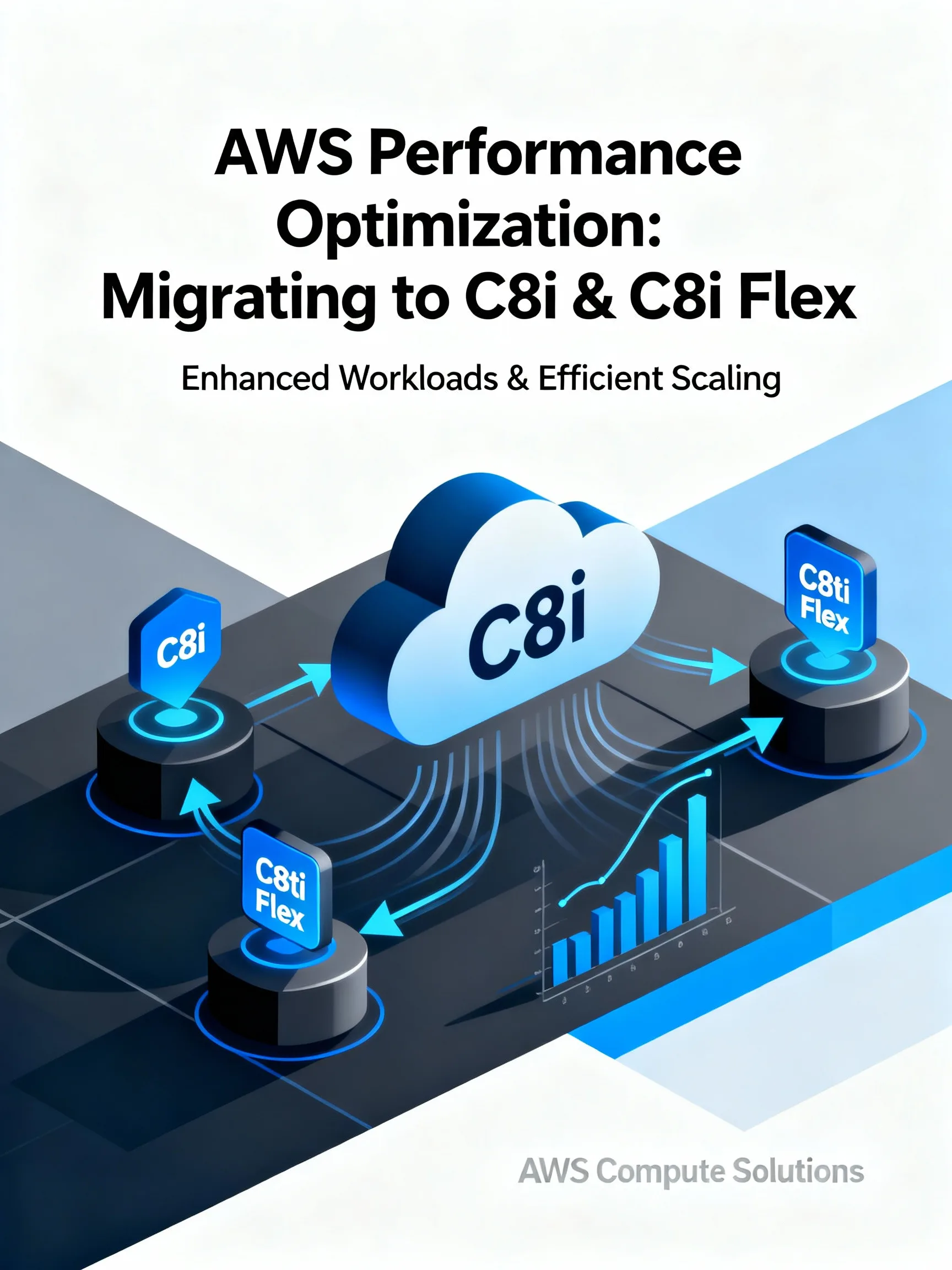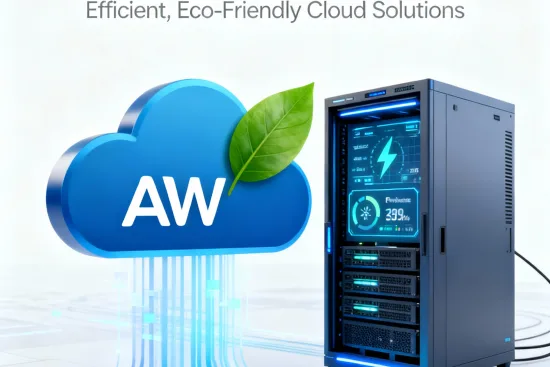
Introduction
A focused migration to newer instance families can unlock meaningful gains. AWS Performance optimization Migrating to C8i and C8i flex helps teams improve price-performance and memory throughput for compute-bound workloads. This article explains why C8i and C8i flex matter, how to benchmark and size, practical migration steps, and cost controls to capture measurable benefits.
Why C8i and C8i flex matter for performance
C8i and C8i flex are purpose-built for compute-optimized workloads where single-thread performance, core density, and memory bandwidth directly affect throughput. Compared with older compute families, many customers see lower latency on CPU-bound tasks and higher sustained throughput on memory-intensive kernels. Because C8i flex allows custom vCPU-to-memory ratios, you can right-size instances for mixed workloads without paying for excess RAM.
Typical improvements vary by workload: integer and floating point compute may see double-digit gains in execution time, while memory-bound applications (caching, serialization, large in-memory datasets) often report up to 10–40% higher throughput in real-world benchmarks when tuned correctly. These numbers depend on application profile, EBS configuration, and networking setup.
Sizing and benchmarking considerations
Before migrating, run a baseline: document current vCPU, memory, I/O, network, and latency characteristics. Create a simple test matrix that compares existing instances to candidate C8i and C8i flex sizes.
- CPU: use workloads such as compile jobs, matrix multiplications, or your actual service under load to compare requests/sec and p95 latency.
- Memory throughput: run memory microbenchmarks (stream, lmbench) and your application under realistic heap/stack sizes to detect bandwidth limits.
- I/O and network: measure EBS IOPS/latency with fio and network bandwidth with iperf or application traces.
For repeatable results, pin vCPU and isolate background noise (use dedicated test accounts or placement groups). When benchmarking, ensure the same AMI and kernel versions are used on both source and target to avoid artifacts caused by software differences.
Memory throughput and price-performance tuning
Memory throughput is critical when your workload reads/writes large in-memory datasets or relies on aggressive caching. C8i instances often expose higher memory bandwidth and improved NUMA layouts compared to predecessors. With C8i flex, you can configure memory to match your workload’s working set, avoiding the price penalty of oversized general-purpose instances.
- Right-sizing rule of thumb: target memory equal to 1.2x your working set to minimize paging and GC pressure for JVM-based apps.
- Use hugepages or gremalloc settings if your application suffers from TLB misses on large memory operations.
- Tune kernel parameters: vm.swappiness, vm.dirty_ratio, and net.core.rmem_max/wmem_max to match the new memory and network characteristics.
Price-performance: run cost-per-throughput calculations (monthly cost divided by baseline throughput). In many assessments, optimized C8i types reduce cost-per-unit-of-work because they deliver higher throughput per vCPU and eliminate memory waste via C8i flex. Example: if a C6i vCPU delivers 100 req/s and costs $0.02/hr, and a corresponding C8i vCPU delivers 140 req/s at $0.025/hr, your cost per request falls even though hourly cost rose—this is the essence of improved price-performance.
Migration strategy and practical steps
A staged approach minimizes risk and captures savings. Follow these pragmatic steps:
- Inventory: catalog workloads, dependencies, and current instance types with CPU, RAM, disk, and network profiles.
- Baseline and target selection: pick 2–3 candidate sizes per workload (including C8i flex options) and run the benchmarks described above.
- Prototype: migrate a non-critical service to the C8i candidate, validate functional correctness, and run load tests in an isolated environment.
- Canary rollouts: route a small percentage of traffic to the new instance family and monitor p95/p99 latency, error rates, and system metrics.
- Full migration and cleanup: gradually expand traffic and decommission legacy instances once stability and cost targets are met.
Operational tips: ensure your AMIs include the latest ENA and NVMe drivers, use Amazon Linux 2 or updated kernels for best Nitro support, and place instances into cluster placement groups if low latency between nodes matters. For horizontally scalable services, use auto scaling groups with mixed instance policies to test new families alongside old ones without downtime.
Monitoring, cost controls, and ongoing optimization
After migration, continuous monitoring is crucial. Track CPU steal, CPU utilization, memory page faults, and network metrics. Automate alerts when latency or error rates deviate from your canary baseline.
- Cost controls: combine Savings Plans or Reserved Instances with a Spot strategy for non-critical batch work.
- Rightsizing automation: use metrics to identify underutilized memory or vCPU and convert those instances to C8i flex with a tailored memory ratio.
- Performance regression tests: schedule periodic synthetic tests to compare price-performance across instance families as AWS updates hardware and pricing.
Example: a team migrated a compute-bound analytics service and replaced 10 c6i.8xlarge instances with 8 c8i.8xlarge and 2 c8i flex instances tuned to reduce memory overhead. They observed a 25% reduction in cost per completed job and a 30% lower median job time after tuning kernel and JVM heap sizes.
Conclusion
Migrating to C8i and C8i flex is a practical way to boost throughput and optimize cloud spend for compute- and memory-sensitive workloads. By benchmarking, right-sizing with C8i flex, tuning kernel and application parameters, and rolling out changes in canaries, teams can capture measurable price-performance and memory throughput gains while controlling risk and cost. Start with a focused pilot and iterate based on metrics to maximize ROI.






Leave a Reply